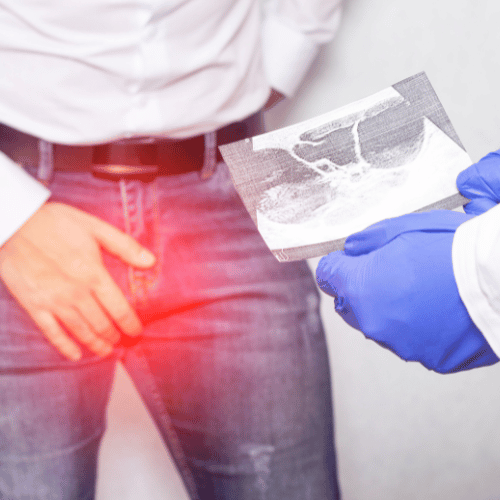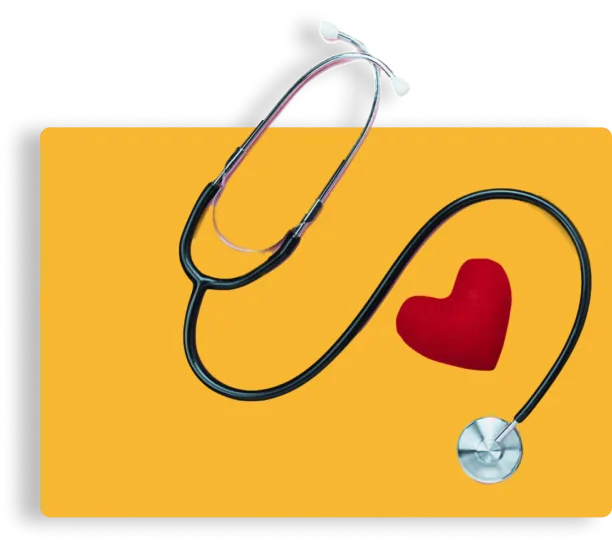
Men: Boost Testosterone & Balance Hormones with This Guide
Research has confirmed that engaging in regular physical activity is one of the most effective ways to boost testosterone levels.
Men Health > Testicular Lumps

Find Out More


Testicular lumps are any abnormal growths or swellings in the testicles. These lumps can vary in size, shape, and texture and may be discovered during self-exams or routine check-ups.
While not all testicular lumps are serious, it is essential to seek medical evaluation to determine the cause and appropriate treatment.

Testicular lumps can arise from benign conditions such as epididymal cysts, varicocele, and hydrocele. Epididymal cysts are fluid-filled sacs in the epididymis and are usually painless. Varicocele involves enlarged veins in the scrotum, causing discomfort and swelling, while hydrocele is fluid accumulation around the testicle, leading to swelling.
Infections like orchitis and epididymitis can also cause testicular lumps. Orchitis is inflammation of the testicle due to viral or bacterial infections, characterised by swelling, pain, and redness. Epididymitis is inflammation of the epididymis, usually from an infection, causing tenderness and swelling.
Testicular cancer is a more serious condition, presenting as a firm, painless lump. Although many causes of testicular lumps are benign, it is important to have any symptoms examined and treated promptly.
Testicular cancer occurs when abnormal cells in one or both testicles grow uncontrollably. It may present with various symptoms, including a lump or swelling in one or both testicles, pain or discomfort in the testicles or scrotum, a feeling of heaviness in the scrotum, changes in the size or shape of the testicles, or a dull ache in the lower abdomen or groin.
Most testicular lumps are benign (non-cancerous), but it is important to diagnose and address any unusual conditions as early as possible. Testicular cancer can develop at any age, with roughly half of all cases found in men between the ages of 20 and 34.
Fortunately, testicular cancer is one of the least common cancers and has a very low risk of mortality. It is usually detected early and can be treated effectively.


Testicular torsion is a medical emergency that occurs when the spermatic cord, which supplies blood to the testicle, becomes twisted. This twisting cuts off the blood flow to the affected testicle, leading to severe pain and swelling. Without prompt treatment, the testicle can become permanently damaged or even die due to the lack of blood supply.
The condition can happen suddenly and often requires immediate surgical intervention to untwist the cord and restore blood flow. Testicular torsion is most common in young males, particularly between the ages of 13 and 17, but it can occur at any age. Symptoms include sudden, severe pain in the testicle, scrotal swelling, nausea, vomiting, and abdominal pain. If you suspect you have testicular torsion, seek emergency medical attention right away.
Treatment varies depending on the underlying cause of the lump:

While not all testicular lumps can be prevented, performing regular self-exams can help with early detection.
Use our online booking engine or book your test by giving us a call.
On the online booking engine select the “appointment type” you need.
You will be seen by one of our friendly doctors or trained clinicians.

Be prepared to discuss any symptoms, pain, or changes in the testicles or scrotum. Mention any family history of testicular cancer or other relevant conditions. Expect a comprehensive exam that will involve an assessment of the testicular area. Prepare any questions you have about testicular symptoms or changes. Consider having someone accompany you for support or to take notes during the appointment. It is best to avoid sexual activity or vigorous exercise before the exam, as these can sometimes affect the examination findings.

The provider will perform a physical examination, which typically involves palpating the testicles and scrotum to assess the lump’s size, consistency, and mobility. Imaging tests are often used to obtain a detailed image of the testicle and the lump, helping to differentiate between solid and fluid-filled lumps. Blood tests may be ordered to check for markers associated with testicular cancer or infections. If you have concerns or need clarification about the exam or tests, do not hesitate to ask your provider. The examination will be conducted in a private setting, and you can request a chaperone if that makes you more comfortable.

The timeframe for receiving test results regarding testicular lumps can vary depending on factors such as physical examinations, imaging tests, blood analyses, and consultations. Based on initial findings, further diagnostic tests or referrals to a specialist may be necessary. If you experience discomfort after the examination, over-the-counter pain relief might be recommended. Follow any specific care instructions given by your provider and adhere to any lifestyle or treatment recommendations provided to manage the condition effectively.
Incorporated
in 1998
Experienced doctors & a professional team
Registration
not needed
Up-to-date with the latest treatments & testing
Strictly
confidential
Experienced doctors & a professional team
Affordable private
health care
Transparent fee structure with no hidden charges
We work with experienced consultants & healthcare professionals who have received positive feedback from our patients, and with whom we have established long-term relationships.
Latest Episode
Tune in to our podcast to explore the world of healthcare and learn from distinguished special guests. We cover everything from preventative measures to cutting-edge treatments so that you can stay informed and up-to-date on health-related things.

Research has confirmed that engaging in regular physical activity is one of the most effective ways to boost testosterone levels.

Your 40s can bring key health changes. At Walk-in Clinic, we highlight eight common concerns men face, and why early

Men face specific health concerns that require attention. Understanding these issues helps support better decisions, prevention, and overall well-being.
Subscribe for latest updates & news


From same-day private GP and blood test appointments to visa medicals, a sexual and reproductive health clinic, and preventative health screenings, we are here to help.
Contact Us
Accepted Insurance Companies






Please note that Walk-in Clinic is a private medical centre & not an NHS service. Harley Walk-in Clinic Ltd company registration no. 07472804